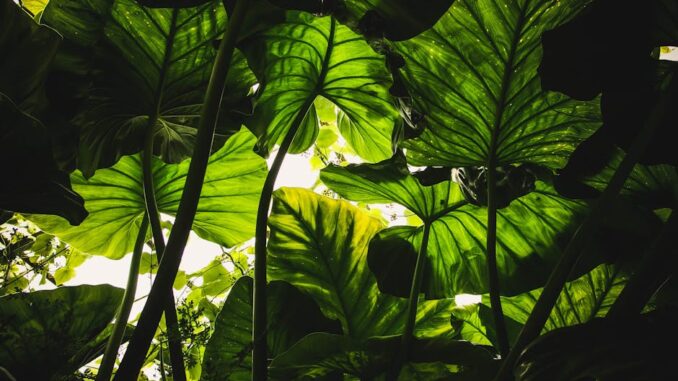
Summary
Transform your garden into a relaxing haven with these low-maintenance strategies, incorporating easy-care plants and smart design choices. Maximize enjoyment and minimize effort for a thriving outdoor space. Create an oasis of calm with minimal upkeep.
Turn your garden into your private retreat, enjoyable day or night complements of Elegancia.homes.
** Main Story**
Creating a Low-Maintenance Oasis
Wouldn’t it be great to have a beautiful garden without constantly slaving away? I mean, who doesn’t dream of that? The good news is, achieving a stunning, yet easy-care garden is totally doable with some smart planning and plant choices. It’s all about working smarter, not harder. So, let’s dive into how you can cultivate your own low-maintenance haven.
Step 1: Embrace Simplicity
Seriously, ditch the lawn. Lawns are needy, demanding all your time and attention with their constant mowing, feeding, and weeding. I remember one summer, I swear my entire weekend revolved around battling dandelions! Instead, think about paving, decking, or gravel for walkways and patios – seriously, they are life savers. Minimizing those grassy areas makes a huge difference.
- Reduce lawn areas
- Consider paving, decking, or gravel
- Use edging to contain any lawn you do keep. If you must keep a lawn, edging is key to keep it from taking over your flower beds.
Step 2: Choose the Right Plants
This is where the real magic happens. Selecting low-maintenance plants that thrive in your specific climate is crucial; and they need minimal attention. I am talking about hardy plants! For example, Evergreen shrubs like abelia and pittosporum provide year-round structure. Perennials such as hardy geraniums and hebes offer reliable color with minimal fuss. What’s not to love?
- Evergreen shrubs (abelia, pittosporum).
- Hardy Perennials (geraniums, hebes).
- Long-flowering Perennials (erigeron, erysimum).
- Spring-flowering bulbs (daffodils, hyacinths).
- Drought-tolerant succulents (sedum).
- Low-Maintenance fruit (strawberries, rhubarb, gooseberries, currants)
On the other hand, for vibrant seasonal color, consider long-flowering perennials like erigeron and erysimum. And who can resist the effortless beauty of spring-flowering bulbs like daffodils and hyacinths year after year? For a really unique touch, explore drought-tolerant succulents like sedum. They thrive on neglect, practically!
And if you’re craving fresh fruit, here’s a thought. Choose low-maintenance options like strawberries, rhubarb, gooseberries, and currants. You’ll get yearly harvests with barely any effort after they’re planted. It’s practically cheating!
Step 3: Mulch for Weed Control
Mulch is your best friend, trust me on this. A thick layer around your plants suppresses weeds and, at the same time, retains soil moisture. It’s like a two-for-one deal! You can choose organic options like compost, or inorganic choices like gravel or wood chips. This drastically reduces weeding time. And let’s be honest, who enjoys weeding? Plus, it enhances the garden’s overall appearance.
Step 4: Strategic Design
Now, let’s get a little creative. You can employ clever design strategies to create an illusion of space and maximize impact. For instance, in small gardens, using vertical space with climbing plants like star jasmine on trellises or walls is a game-changer. Hanging baskets, for instance, add vibrant color without taking up ground space. It’s all about being resourceful.
- Use climbing plants on trellises or walls.
- Hanging baskets add vibrant color.
- Defined beds and borders streamline maintenance.
- Group plants with similar needs together.
- Raised beds improve drainage.
- Multi-season trees provide year-round interest.
Organize the garden with defined beds and borders to streamline maintenance. It looks neater, and it makes it easier to target your efforts. Group plants with similar needs together to simplify watering and fertilizing. And, maybe even raised beds for improved drainage and easier access are a good idea too, especially if you’re planning a vegetable garden.
If you’re tight on space, multi-season trees are great. Select ones that offer interest beyond just flowering. Trees such as amelanchier or prunus are a good choice as they give spring blooms, summer fruit, and stunning fall foliage.
Step 5: Efficient Watering
Watering can be a real chore, can’t it? I mean, no one wants to spend hours lugging a hose around. So, minimize those watering chores by installing a timed watering system. It’s a lifesaver, especially during dry periods. Alternatively, choose drought-tolerant plants that can withstand periods without supplemental watering. Large containers retain moisture better than smaller pots. It reduces how often you need to water, too.
Enhancing Enjoyment with an Orangery
An orangery offers a seamless transition from your home and garden. It makes you enjoy the outdoor space year-round. What’s more, it’s a sheltered area to relax and appreciate the garden. Even when the weather is, lets say, less than ideal. The orangery can also serve as a focal point, framing views and adding architectural interest to the landscape, don’t you think? With its bright and airy ambiance, an orangery extends the garden experience. All while creating a tranquil retreat for relaxation and a connection with nature.


Be the first to comment